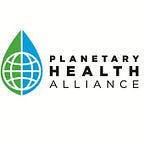Climate Change and Vulnerability to Emerging Infections: Nature’s Revenge or Our Fate!
Muhammad Asaduzzaman
Research Fellow, Centre for Global Health, University of Oslo, Norway
PHA Next Gen Member
Munzur-E-Murshid
Manager, WISH2ACTION Project, Humanity and Inclusion, Bangladesh
The whole world is at standstill due to the COVID-19 pandemic. Vehicles are not running, planes are not flying, factories are closed and even social gatherings are halted. The world has not been faced with such great danger since World War II. The COVID-19 crisis has demonstrated how helpless we truly are. After the COVID-19 pandemic, the question arose as to whether climate change has anything to do with the emergence of such pandemics. The question has not yet been fully answered. However, scientists have identified various factors that have been linked to the emergence of viral diseases.
Global warming and pathogen emergence
Global warming has a tremendous effect on climate change and disease causation. The Earth’s temperature has risen by 0.060C per decade since 1980. Since 1981, the temperature has risen by 0.170C per decade, which is more than double that of the past. Due to global warming, various microorganisms, especially viruses, are learning to adapt to higher temperatures in the environment. We know that the average human body temperature is 370C, which protects us from various germs as many pathogens cannot survive at this temperature. However, the body’s relatively high temperature is no longer protective in many cases due to the issue posed by climate change.
Ice melting, deforestation and their collective effect
Ice is melting while deforestation continues. As a result, animals in the polar regions are moving towards the center of the planet and animals in the center are running towards the poles. The animals that are on land are moving about 10 miles every 12 years whereas those in the water are moving about 4 times faster. These inter-regional movements are increasing the risk of new germs spreading to new species of animals and subsequently from animals to humans.
Forests are extremely important in protecting our global ecosystems. Unfortunately, forests, which should cover 30% of the world’s land area, are rapidly disappearing. According to the World Bank, 1.3 million square kilometers of forests were cleared worldwide from 1990 to 2016. Indiscriminate deforestation is reducing the distance between wildlife and humans and as such, increasing the risk of spreading various diseases, especially viral diseases such as Nipah and Lassa fever. The emergence of pathogens due to deforestation is evident. From 2003 to 2015, the number of malaria patients increased by 3% in Brazil as the rate of deforestation has increased by 10% per year. Furthermore, financial losses due to deforestation in the name of development are an unexpected outcome.
Wildlife trade: a major culprit
The wildlife market is undoubtedly a big market. There is a high demand for wildlife trade globally, especially for bush meat, skin and other body parts. In many places, these are used as food or within the medical and fashion industries. In Central Africa, more than 1 billion kg of bush meat is consumed per year, whereas in the Amazon Basin, bush meat consumption is estimated at 67 to 164 million kg per year. Each year, around 40,000 live primates, 4 million live birds, 640,000 live reptiles, and 350 million live tropical fish are traded around the world. This estimate is from the 1980s, so one can only guess how enormous the market is today. Wildlife trading centers (wet markets), where animals are bought, sold and slaughtered, are also very unhealthy. In these markets, different species of animals are crowded together, which only increases the risk of disease spillover.
Stress in life: the curse of urban and modern civilization that has deviated from nature
Today, people are accustomed to modern urban life and live with much more stress than their ancestors. The Gallup 2019 Global Emotions Report stated that the enormous and alarming mass stress situation existing in 143 countries depicts the uselessness of economic growth in human life to gain sound mental health. There is a strong negative correlation between stress and urban and modern life that deviates from nature. Excessive stress weakens the immune system, which in turn places stressed people at greater risk of infections caused by various pathogens.
What can we do?
- We need to reduce our dependence on animals for food consumption and reliance on using animal body parts (flesh, bones, teeth, nails, skin, etc.) in the fashion and medical industries.
- We must halt the destruction of Nature in the name of sustainable development
- We have to ensure access to healthy cities to live in and work through Nature-based solutions, such as renaturing cities.
- We need to strengthen our investment in law enforcement to save wildlife from the illegal wildlife trades.
- We must devise long-term plans to improve the quality of life for those involved in the wildlife trade in order to incentivize them to move away from the business.
Those of us in our 30s and 40s have been learning about climate change, global warming, CO2 emissions and the greenhouse effect since our childhood. However, we are part of the unfortunate human generation that is witnessing how global warming, glacial ice melting, deforestation, the global wildlife trade, and the negative impact of urban city life wreak havoc on our mental health and immune systems. All of these factors create the perfect environment for dangerous pathogens to emerge. Now, it is our responsibility to eliminate pathogen emergence as a result of anthropogenic activities in order to ensure a healthy planet for future generations. The COVID-19 pandemic has demonstrated how we need to modify our thinking, and the need to act to either prevent or prepare for the next global pandemic.
